I need to draw the density curve on the Histogram with the actual height of the bars (actual frequency) as the y-axis.
Try1: I found a related answer here but, it has normalized the Histogram to the range of the curve.
Below is my code and the output.
import numpy as np
import matplotlib.mlab as mlab
import matplotlib.pyplot as plt
from scipy.stats import norm
data = [125.36, 126.66, 130.28, 133.74, 126.92, 120.85, 119.42, 128.61, 123.53, 130.15, 126.02, 116.65, 125.24, 126.84,
125.95, 114.41, 138.62, 127.4, 127.59, 123.57, 133.76, 124.6, 113.48, 128.6, 121.04, 119.42, 120.83, 136.53, 120.4,
136.58, 121.73, 132.72, 109.25, 125.42, 117.67, 124.01, 118.74, 128.99, 131.11, 112.27, 118.76, 119.15, 122.42,
122.22, 134.71, 126.22, 130.33, 120.52, 126.88, 117.4]
(mu, sigma) = norm.fit(data)
x = np.linspace(min(data), max(data), 100)
plt.hist(data, bins=12, normed=True)
plt.plot(x, mlab.normpdf(x, mu, sigma))
plt.show()
 Try2:
There @DavidG has given an option, a user defined function even it doesn't cover the density of the Histogram accurately.
Try2:
There @DavidG has given an option, a user defined function even it doesn't cover the density of the Histogram accurately.
def gauss_function(x, a, x0, sigma):
return a * np.exp(-(x - x0) ** 2 / (2 * sigma ** 2))
test = gauss_function(x, max(data), mu, sigma)
plt.hist(data, bins=12)
plt.plot(x, test)
plt.show()
The result for this was,
 But the actual Histogram is below, where Y-axis ranges from 0 to 8,
But the actual Histogram is below, where Y-axis ranges from 0 to 8,
 And I want to draw the density curve exactly on that. Any help this regards will be really appreciated.
And I want to draw the density curve exactly on that. Any help this regards will be really appreciated.
